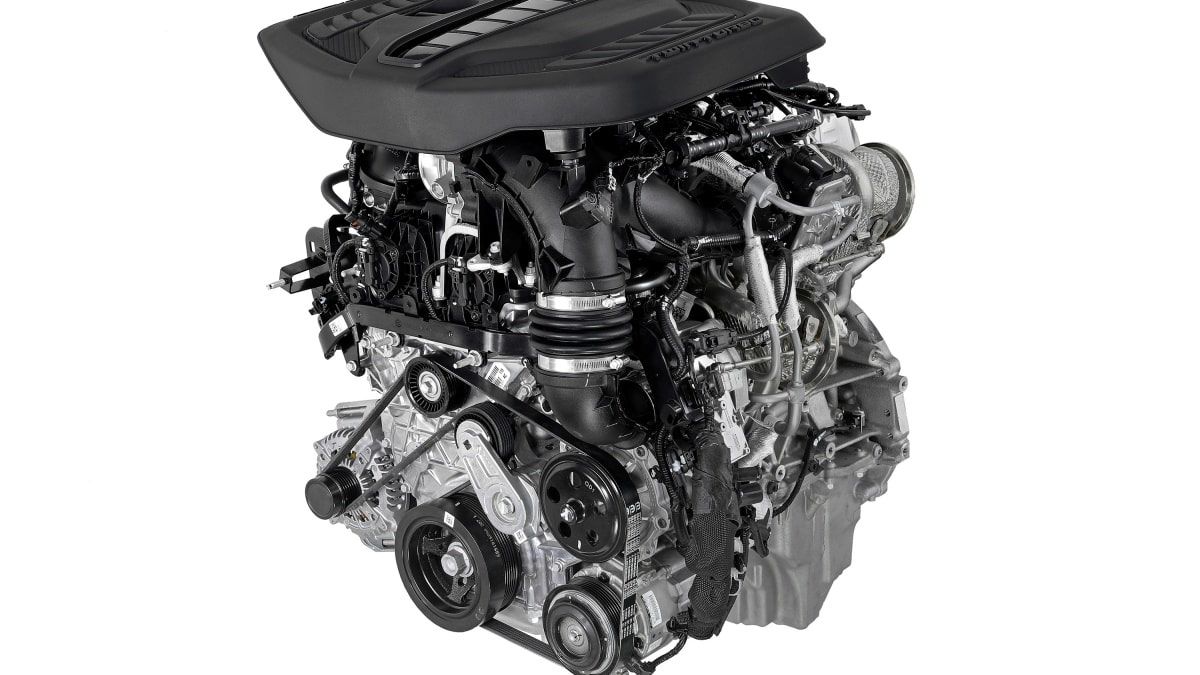Since the dawn of high-performance automobiles, American cars have been associated with big V-8 engines. Thanks to ever-stringent emissions regulations, the days of big-displacement engines are numbered, and even companies like Chrysler, now part of Stellantis, which are hell-bent on keeping traditions alive, have to go the downsizing and electrification routes. Dodge's iconic Charger became a high-performance EV, and the Hemi V-8 engines are being replaced by a new inline-six that promises great performance, following a few Last Call Dodge models, including the Durango Hemi.
While V-8s are most memorable, American carmakers, Chrysler included, have used inline-six engines for the base variants of iconic models like the Dodge Challenger and Plymouth Barracuda. So you see how, in my opinion, Chrysler's use of this inline-six isn't as blasphemous as purists might think. Over the next few years, the Hurricane inline-six will be featured in a wide variety of vehicles, from Dodge, Chrysler, Jeep, and eventually, even the mightiest of all RAM pickup trucks, with some variations, aided by electrification.
Moreover, you can pick the Hurricane engine as a crate motor from Dodge's Direct Connection program, and from what we already know about the engine, it's potent enough to compete with the iconic Toyota 2JZ and BMW's B58 inline-six units.
Dissecting the Hurricane Inline-six
As with any, highly engineered "downsized” engine, the Hurricane's main purpose is to produce Hemi V-8 power from smaller displacement while being more fuel-efficient. While Toyota's hybrid Tundra is proof that a smaller engine coupled to an electric motor isn't always the way to go, the Hurricane inline-six is revolutionary compared to the pushrod V-8s from yesterday.
The Hurricane is all-aluminum, which means at its heaviest, it tips the scales at 441 pounds (200 kg), fully outfitted. Its cast-aluminum, deep-skirt block is robust enough to handle over 1,000 horsepower according to Dodge CEO, Tim Kuniskis, and you can, actually, get such an engine out of the box (more on that in a bit).
Key features of the Hurricane inline-six:
- Forged crankshaft made of twisted steel
- Forged steel connecting rods
- Two low-inertia, sequential turbochargers, each feeding three cylinders
- High-pressure, 350 psi direct injection with double fuel pumps for the High Output. variant
- DOHC (double overhead cam) valvetrain with fully independent, variable valve timing
- Dual water-cooled exhaust manifolds integrated into the cylinder head
- Plasma Transfer Wire Arc (PTWA) coated cylinder bores for minimized friction
- Continuously variable displacement oil pump
- High-flow ball-valve thermostat for optimized cooling
Already available as a crate motor in a few different packages
Dodge's Direct Connection program is a MOPAR enthusiast's wet dream. Among the plethora of performance accessories, there are three different versions of the Hurricane inline-six, which can be had as crate packages.
Hurricane Cat1 is the first package. This is the Hurricane S.O. variant, which comes with 420 horsepower and 469 pound-feet. The twin-turbochargers produce 22 psi of boost. This is the newest package and is available from the first quarter of 2024.
Hurricane Cat3 is the second version of the Hurricane Crate motor. With 26 psi of boost, the output is 550 horsepower and 521 pound-feet. There will be a slightly de-tuned version of this engine producing 510 horsepower and 500 pound-feet.
Hurricane CatX is all about dominating the quarter mile. No exact figures have been released yet, but according to the Dodge Direct Connection catalog, a plethora of race-derived parts will aid the American inline-six to reach the target figure of around 1,500 horsepower.
Can the Hurricane inline-six compete with the legendary Toyota 2JZ and new, but capable BMW B58 and S58?
By now, it's clear to everyone infatuated with JDM cars that the Toyota 2JZ inline-six engine is one of the most well-engineered engines ever made. The BMW B58 inline-six and its more powerful S58 variant are considered the new-generation 2JZ engines, especially now that Toyota developed the GR Supra on the bones of the BMW Z4.
A stock 2JZ can take 600 wheel-horsepower, which isn't a lot more than the smaller 1JZ engine. BMW's B58 and S58 engines have a similar cap at around 700 wheel-horsepower. Anything more and you have to think about a fully-forged engine.
Then there is the fact an unmolested 2JZ engine is increasingly difficult to find, which drives prices up even more. At the same time, BMW's potent inline-six engines are not offered as crate motors, meaning you have to spend a hefty sum of money on one of the cars equipped with either a B58 or S58 engine. Soon, this will include the Toyota Supra GRMN, which would be a hefty sum more than the GR Supra.
With that said, if the Hurricane CatX could be had for anywhere under the Hellephant V-8's $27,695 MSRP, which yes, you can buy a whole car for that, it would be something of a bargain.
In case you wonder how much it costs to get a Toyota 2JZ to over 1,000 horsepower reliably, quick research on Supra Forums reveals shocking numbers of $60,000 to $90,000. Meanwhile, Dodge is offering a readily available engine at two to three times less. We can all do the math.
Dimitar Angelov's automotive interests made him an expert in a wide variety of vehicles. Japanese brands like Toyota are closest to his heart, although performance cars in general are his favorite segment, which is why he is constantly on the lookout for the best deals on the market. Dimitar Angelov's car passion and knack for the written word led him to complete a Master of Arts in Media and Communications, and classic car restoration. Dim is happy to get behind the wheel of any car and share his impressions. You can follow Dimitar on X, Linked-in, Instagram, and Facebook.





